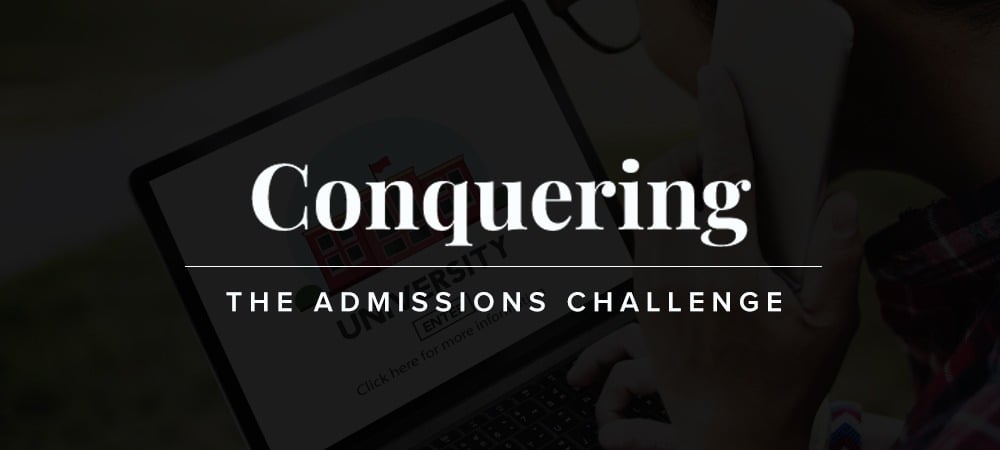The number of annual college applications is on the rise—and doesn’t seem to be dwindling anytime soon. In 2017 alone, many universities saw record numbers of applicants, with UCLA becoming the first to receive over 100,000 in a single year. Duke and Boston University also hit personal records, with each breaking over 30,000 and 60,000 applications, respectively.

With so many new potential students to consider, how are universities coping? And, for admission officers specifically—the “front-line” staff who interface with students—what can they do to ensure each applicant receives the attention they need?

According to Stevens VanDuzer, director of graduate recruiting at Georgia State University’s Robinson College of Business, it’s all about strategy and efficiency. “One of the biggest challenges my office faces is the level of new work,” says VanDuzer. “It’s like we’re juggling and more and more balls are added as we go. It requires an increasing level of skill and support.”
For VanDuzer—who, like many admission directors, can’t afford to expand his staff—marketing automation and CRM software is his solution. The digital program helps manage the influx of applications, categorizing student data such as geographic location, test scores and degree program of interest.
This not only helps manage large volumes of information—it allows him to strategically choose how to interact with each student. “With a larger applicant pool, it can be tough to create the meaningful connections we want,” VanDuzer says. “Marketing automation gives us an in-depth understanding of each individual’s experience so that we can meet this goal.”

Jason Garner, an admission director at American University in Washington, DC, agrees. “Having student data easily accessible allows admission teams to have a much more informed conversation with applicants.”
The fact that the college applicant’s profile is shifting is an added challenge. The National Association for College Admission Counseling (NACAC) notes that Generation Z, born between 1995-2010, is quickly replacing millennials on college campuses. For this new population, a personalized and tech-savvy approach isn’t just preferred—it’s essential.
NACAC describes Generation Z as wanting “instant answers to their questions” and needing “one-on-one communication.” These students expect their experience “to evolve based on their engagement.”
VanDuzer and his team have stayed ahead of this trend through CRM software. They’re able to score each lead based on criteria, like level of interaction, so they know how frequently to contact a student. The team is alerted if an applicant shows positive intent—like if they’re on a program’s webpage for several minutes—so someone can reach out immediately.
The admission team can also manage data mobile-ly through an app, allowing them to send messages even when they’re on-the-go. And they’re encouraged to text applicants—Generation Z’s preferred method of communication.
“This type of technology helps admission offices be actionable with applicants’ needs,” Garner says.
This action-oriented approach could make the difference between an enrolled student and one who chooses another school, Garner continues. Utilizing CRM software that both helps manage the volume of applications and addresses Generation Z’s needs is critical.
At Robinson School of Busiess, VanDuzer endeavors to continue honing his data collection and communication strategy with applicants. And, despite the heavy work load and high expectations, with marketing automation and CRM software, he’s able to.
“We can make sure students get information about our programs and engage with the school, even before someone reaches out to address questions,” VanDuzer says. “[It allows us] to improve the student experience, which is what we’re here for.”
Next:








